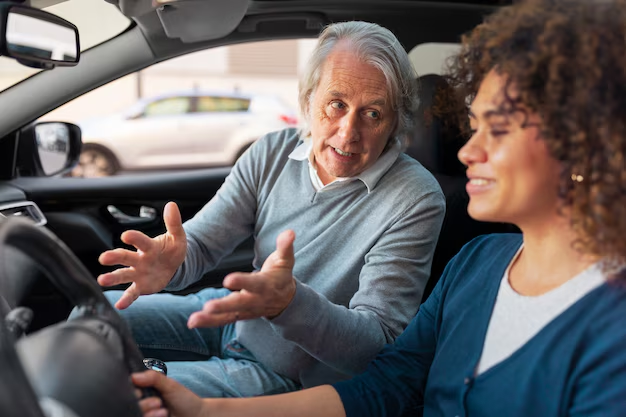Driving with Parkinson's: What You Need to Know
Navigating life with Parkinson's disease presents unique challenges, and one pertinent question on the minds of many diagnosed individuals is, "Can I still drive?" The freedom and independence associated with driving are significant aspects of one's lifestyle. In this article, we'll dive deep into the considerations surrounding driving for those living with Parkinson's, providing a comprehensive guide to the options, challenges, and solutions available.
Understanding Parkinson’s Disease and Its Impact on Driving
Parkinson's disease is a progressive neurological disorder that affects movement. Key symptoms may include tremors, stiffness, slowed movement, and balance difficulties. As such, these symptoms can directly impact an individual's driving abilities. The ability to drive safely depends on various factors including reaction time, coordination, judgment, and vision—areas that Parkinson's can influence.
How Parkinson’s Progression Affects Driving Abilities
- Tremors: Shaking hands can make steering difficult.
- Muscle Stiffness: Affects the ability to turn the wheel and use pedals smoothly.
- Bradykinesia (Slowed Movements): Can delay response times when reacting to road hazards.
- Postural Instability: May complicate balance while entering or exiting the vehicle.
- Cognitive Impairments: Decision-making and concentration can also be affected as the disease progresses.
Are You Physically and Mentally Fit to Drive?
The decision to continue driving when diagnosed with Parkinson's should take into account the individual's current physical and cognitive condition. Medical professionals often stress the importance of regular assessment to ensure safety. Here are some vital considerations:
Regular Evaluation
- Consult Your Doctor: Regular appointments to assess how symptoms are being managed can guide driving decisions.
- Neurologist/Physical Therapist Input: These specialists can provide tailored insights on how your physical state may affect driving.
- Occupational Therapy Driving Assessments: Specialized programs can evaluate driving skills through simulated or on-road tests.
Self-Assessment Tools
Individuals can self-assess by observing their own driving habits and responses or by asking a trusted friend or family member to offer feedback on their driving ability. Questions to consider include:
- Do I feel confident and comfortable behind the wheel?
- Do I take longer to make decisions, especially at stop signs or when changing lanes?
- Have others commented on my driving changes?
Adaptive Strategies for Continued Driving
If deemed safe to drive, individuals with Parkinson's can use several adaptive strategies to prolong their driving tenure safely. Here are some practical modifications and technologies that might help:
Modifications and Technologies
- Drive-Assist Technologies: Such as lane-keeping assist, adaptive cruise control, and parking assist, which can reduce the physical demands of driving.
- Adaptive Equipment: Based on needs, equipment such as hand controls or touch screens might be installed to assist with vehicle operation.
- Vehicle Choice: Opt for cars with automatic transmission, power steering, and rear-view cameras to enhance ease of driving.
Legal and Regulatory Considerations
While personal awareness and doctors' recommendations are essential, so too are legal considerations. Driving regulations for individuals with Parkinson's differ from one location to another. Check the local Department of Motor Vehicles (DMV) for regulations specific to your area.
Engaging with Authorities
- Mandatory Reporting: Some jurisdictions require medical professionals to report conditions that could impair safe driving.
- Regular Testing: Some areas may mandate periodic retesting to assure continued driving capability.
Alternatives to Driving: When It’s Time to Retire Keys
There may come a time when driving is no longer safe. Understanding alternatives can be empowering:
Exploring Alternatives
- Public Transportation: Buses, trains, and specialized services for individuals with disabilities can provide reliable transport.
- Ride-Sharing and Taxis: Offers flexibility but requires budgeting for frequent use.
- Community and Volunteer Driving Services: Some communities have volunteer services dedicated to assisting seniors and individuals with medical conditions.
- Walking and Cycling: If able, short distances might still be manageable.
Psychological and Lifestyle Considerations
Stepping back from driving can be a difficult emotional transition. It is crucial to prepare for this change psychologically and practically:
- Stay Active in Decision Making: Give yourself time to accommodate the change and maintain a sense of independence by scheduling regular outings using available transportation alternatives.
- Stay Connected: Reach out to support groups or connect with others who face similar challenges.
Bringing It All Together
Navigating the realities of driving with Parkinson's disease involves thoughtful assessment, smart adaptations, and sometimes difficult decisions about when it's time to stop driving. By staying informed, regularly consulting with healthcare professionals, and understanding available options, individuals can make confident choices that prioritize safety and quality of life. Remember, transitioning from driving is not the end of independence—it's simply a change in how it is achieved.
📝 Key Takeaways:
- Health Evaluation: Regularly assess driving abilities with your doctor or physical therapist.
- Adaptive Technologies: Consider drive-assist and vehicle modifications to aid in driving safely.
- Know the Laws: Check local DMV regulations and comply with any additional licensing requirements.
- Alternative Transport: Plan for and familiarize yourself with public transportation, ride-sharing, or volunteer services.
- Embrace the Change: View retiring from driving as an empowering shift that enables new ways of maintaining independence. 🚗🔄🏠
By understanding the elements involved in driving with Parkinson's, individuals can effectively navigate this aspect of their diagnosis with safety and confidence, ensuring continued independence and quality of life.

Related Articles
- Are There Environmental Causes Of Parkinsons
- Can Alcohol Cause Parkinson's
- Can Concussions Cause Parkinson's
- Can Females Get Parkinson Disease
- Can Head Trauma Cause Parkinson's
- Can Parkinson Disease Cause Dizziness
- Can Parkinson's Affect Eyesight
- Can Parkinson's Affect Memory
- Can Parkinson's Affect Speech
- Can Parkinson's Affect Vision